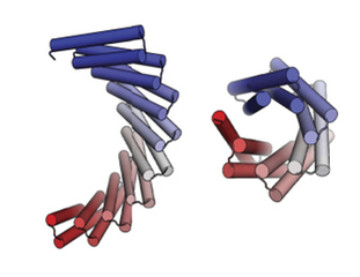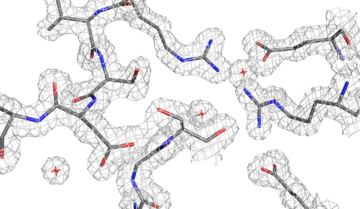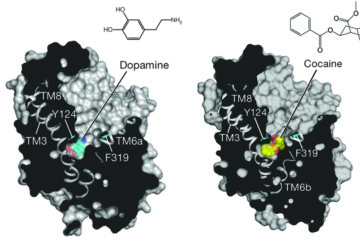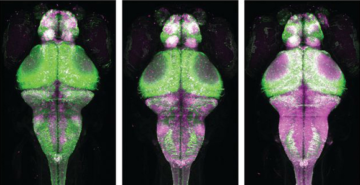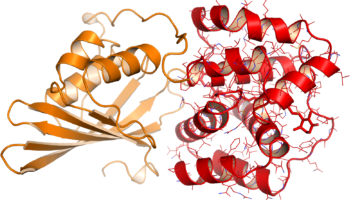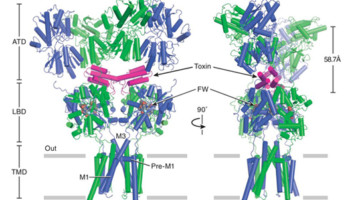Researchers have published a landmark study that used both crystallography and SAXS to validate computationally designed structures of novel proteins with repeated motifs. The results show that the protein-folding universe is far larger than realized, opening up a wide array of new possibilities for biomolecular engineering. Read more »![]()
![]()
Improving Meningococcal Vaccines
Scientists have found a way to improve the stability of an essential antigenic protein to develop vaccines with higher efficacy for prevention of bacterial meningitis. Read more »
A New Pathway for Radionuclide Uptake
Scientists have reported a major advance in understanding the biological chemistry of radioactive metals, opening up new avenues of research into strategies for remedial action in the event of possible human exposure to nuclear contaminants. Read more »![]()
![]()
Binding Behavior of Dopamine Transporter Key to Understanding Chemical Reactions in the Brain
Scientists working at the ALS recently solved the crystallographic structures of several amine transporters in an effort to better understand why the human brain responds to chemicals like dopamine and serotonin. What they found will help in the design of drugs to treat many neurological diseases, and may also lead to a better understanding of how addiction to abused drugs such as cocaine can be managed. Read more »![]()
![]()
A Designed Protein Maps Brain Activity
A team of scientists designed and validated via x-ray crystallographic studies a fluorescent protein (CaMPARI) that allows the permanent marking of active brain cells. The protein was then used to study live changes via fluorescence in the active nerve cells in brains of fruit flies, zebrafish, and mice. Read more »![]()
![]()
Carotenoid Pigment Is the Key to Photoprotection
A technique newly available at the ALS has enabled the discovery of a surprising key event in photosynthetic systems. A protein shifting from an “orange” light-absorbing state to a “red” photoprotective state turns out to be an unanticipated molecular priming event in photoprotection. Read more »![]()
Ancient Proteins Help Unravel a Modern Cancer Drug’s Mechanism
The cancer drug Gleevec is extremely specific, binding and inhibiting only the cancer-causing tyrosine protein kinase Blc-Abl, while not targeting homologous protein kinases found in normal, healthy cells. Researchers at the ALS have uncovered exactly why that is the case, pointing to novel methods of drug discovery. Read more »![]()
![]()
Takeda Advances Diabetes Drug Development at the ALS
Type 2 diabetes mellitus (T2DM), characterized by abnormally high blood glucose levels, affects hundreds of millions of people worldwide. In the pursuit to better treat this disease, the human receptor protein GPR40 has been identified by pharmaceutical company Takeda as a potential new drug target.
Brain Receptor Structures Key to Future Therapeutics
Neurotransmitter receptor proteins are critical to learning and memory. Mutations are associated with neurological and neuropsychiatric conditions including Alzheimer’s, epilepsy, and autism. Structures of two such receptors, solved by x-ray crystallography, provide a blueprint for the development of therapeutics. Read more »![]()
![]()
Designer Proteins Target Epstein-Barr-Virus-Associated Cancer
Researchers used new protein design approaches to develop a potential inhibitor of Epstein-Barr-Virus-associated cancer. The study shows not just how to help defeat the virus, but also opens up a whole new way to design proteins against viruses and ultimately, cancer. Read more »![]()
![]()
- « Previous Page
- 1
- …
- 6
- 7
- 8
- 9
- Next Page »
